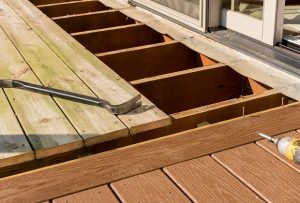
After construction there are a variety of wood elements that may remain exposed; items like floors, stairs, cabinetry, paneling, molding, and shelves may all be made from exposed wood. These features are known as the Architectural Millwork and depending on the purpose and strength needed, you will want to consider different types of wood for each item.
After construction there are a variety of wood elements that may remain exposed; items like floors, stairs, cabinetry, paneling, molding, and shelves may all be made from exposed wood. These features are known as the Architectural Millwork and depending on the purpose and strength needed, you will want to consider different types of wood for each item. With the wide range of wood types and finishes available on the market this may seem daunting at first, but today we’ll walk you through some of what you’ll need to know.
Soft vs. Hardwood
The distinction of hard versus softwood has little to do with the physical strength of the wood in question. Softwood is the term used from lumber that originates from evergreen trees like fir, pine, and cedar. All three of these wood types have a red to warm yellow tone with a closed grain pattern. Hardwoods come from the deciduous tree families and include species like ash, poplar, and oak. Hardwood has open grain and distinctive designs that are clear even after they are finished.
Sustainability
As more and more consumers are aware and invested in their impact on the planet the hunt for more sustainable and eco-friendly housing choices is more important than ever. When you want to consider how the lumber you’ll be using impacts the world around you, there are a few factors to consider. Where does your lumber come from? The more local you can get the better, often shipping is one of the most significant impacts on pollution so try to stick with local or at least domestic wood. Next, is your lumber produced on a tree farm? Many lumber farmers now are able to practice rotational harvesting of wood which reduces the effects of deforestation.
Understanding Wood Grades
As with most industries, the world of wood has its own set of standards that are used to designate the quality of each individual board. Hard and softwood have different scales; for hardwood, the best option is a FAS label or first and seconds, which indicates that no less than 83% of one side of the board is usable. For softwood, C Select is considered the best option and indicates that the board is mostly free of visual defects and sufficiently strong.
QUESTIONS? MAHOGANY INC. IS HERE TO HELP
If you want to know more about how to best care for your mahogany wood, Mahogany Inc. is here to help you. We have the experience and expertise to handle whatever problem you need solved when it comes to wood. Give us a call at 410-727-0334 to speak with one of our knowledgeable people. To see what we are up to or to seek inspiration for your next project, be sure to follow us on Facebook, Twitter, Google+, and Pinterest.
